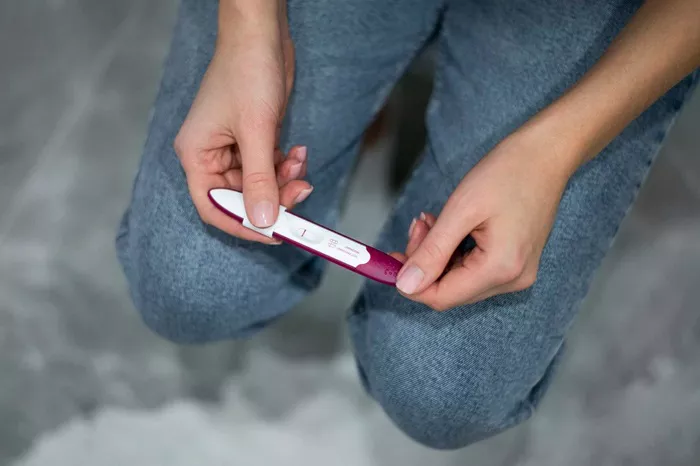Digital pregnancy tests have revolutionized the way women confirm pregnancy. These advanced tools offer a straightforward and reliable method to detect the presence of human chorionic gonadotropin (hCG), the hormone produced during pregnancy. This article delves into the accuracy, mechanisms, and considerations of using digital pregnancy tests to detect early pregnancy.
Understanding Digital Pregnancy Tests
Digital pregnancy tests are electronic devices that provide results in a clear, readable format. Unlike traditional tests, which often rely on lines or color changes, digital tests typically display words such as “Pregnant” or “Not Pregnant.” This clarity eliminates confusion and provides reassurance to users.
How Digital Pregnancy Tests Work
Digital pregnancy tests function by detecting hCG levels in urine. When a fertilized egg implants itself into the uterine lining, the body starts producing hCG. This hormone is the primary marker used in pregnancy tests. The tests employ a sensitive chemical reaction to determine the presence of hCG.
Sample Collection: Users collect urine in a cup or directly on the test stick, depending on the product.
Chemical Reaction: The test contains antibodies that react to hCG. If hCG is present, the antibodies bind to the hormone, triggering a signal.
Digital Display: The electronic components of the test interpret the signal and display the result on the screen.
Sensitivity of Digital Pregnancy Tests
Digital pregnancy tests vary in their sensitivity, which refers to the lowest concentration of hCG that the test can detect. Most tests can detect hCG levels as low as 10 mIU/mL. This level of sensitivity is crucial for early detection of pregnancy.
Early Detection: Some tests advertise their ability to detect pregnancy as early as six days before a missed period. This is when hCG levels may be high enough for detection.
Accuracy Rates: Many digital tests claim over 99% accuracy when used on the day of the expected period. However, accuracy can vary depending on the timing of the test.
Timing of Testing for Early Pregnancy Detection
The timing of a pregnancy test significantly impacts its accuracy. Understanding the menstrual cycle can help women determine the best time to test.
Menstrual Cycle Overview: The average menstrual cycle lasts about 28 days, with ovulation occurring around day 14. After fertilization, implantation typically occurs 6-10 days later.
Optimal Testing Window: Testing too early may result in false negatives due to insufficient hCG levels. Waiting until at least the day of a missed period increases the likelihood of an accurate result.
Factors Affecting Test Results
Several factors can influence the accuracy of digital pregnancy tests, leading to either false positives or false negatives.
Dilution of Urine: Drinking excessive amounts of water before taking the test can dilute urine, lowering hCG concentration and affecting the results.
Testing Too Early: Testing before the expected period can lead to false negatives. It’s advisable to wait for at least a week after a missed period for the most reliable result.
Expired Tests: Using expired pregnancy tests can lead to unreliable results. Always check the expiration date before testing.
Medications and Conditions: Certain medications, particularly those containing hCG, may cause false positives. Conditions such as ectopic pregnancy or ovarian cysts can also affect results.
Benefits of Digital Pregnancy Tests
Digital pregnancy tests offer several advantages over traditional tests, making them a popular choice among users.
Clarity of Results
The clear digital display eliminates the confusion often associated with interpreting traditional test results. Users can quickly and easily understand whether they are pregnant.
User-Friendly Design
Digital tests are designed to be easy to use, with straightforward instructions. Many tests come with a display that indicates when the test is working, reducing anxiety during the waiting period.
Additional Features
Some digital pregnancy tests come with extra features, such as a built-in timer or the ability to track ovulation. These added functionalities can enhance the user’s experience and provide valuable insights into their reproductive health.
Limitations of Digital Pregnancy Tests
While digital pregnancy tests are beneficial, they also have limitations.
Cost
Digital pregnancy tests are generally more expensive than traditional tests. The added cost may be a consideration for some users, especially if multiple tests are needed.
Battery Dependency
Digital tests rely on batteries for operation. A malfunction or dead battery can prevent the test from working correctly, leading to unnecessary frustration.
Sensitivity to Environmental Conditions
Digital tests may be more sensitive to temperature and humidity than traditional tests. Storing tests in improper conditions can affect their reliability.
Conclusion
Digital pregnancy tests are a reliable and user-friendly option for early pregnancy detection. By understanding how they work, their sensitivity, and the best practices for testing, women can utilize these tools effectively. While they offer numerous advantages, users should also be aware of the limitations and factors that can influence results. Ultimately, digital pregnancy tests serve as a valuable resource for women seeking clarity and confirmation regarding their pregnancy status.
For those looking to test for pregnancy, digital pregnancy tests provide an accessible option with clear results. By following guidelines for optimal testing and being aware of potential pitfalls, users can make informed decisions regarding their reproductive health.
Related Topics:


